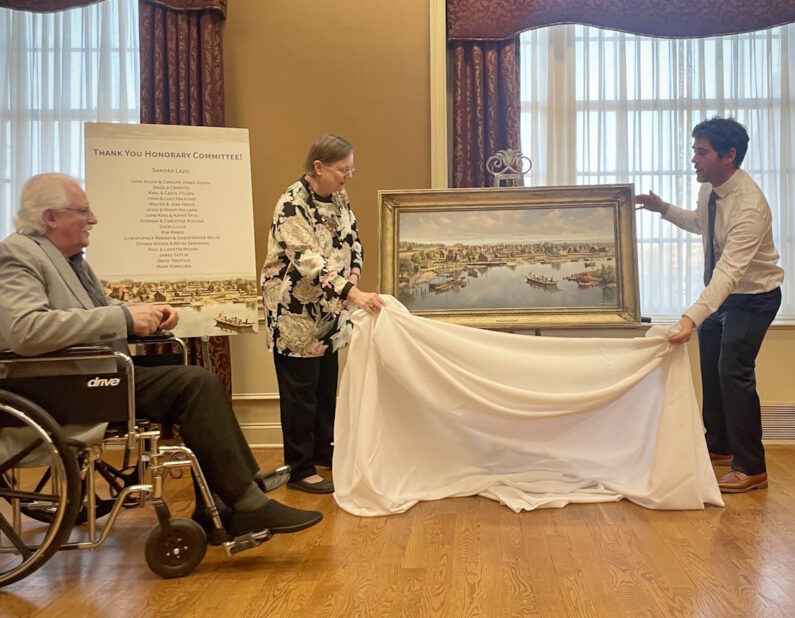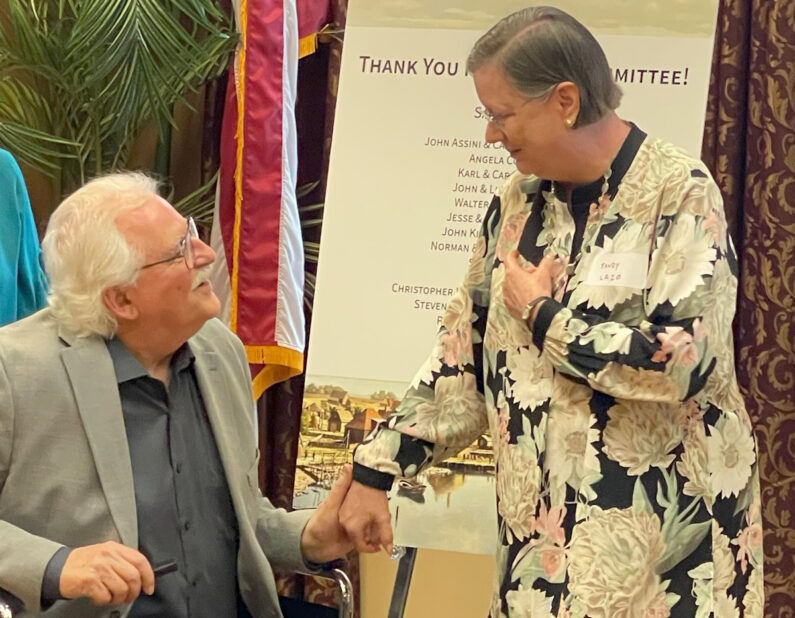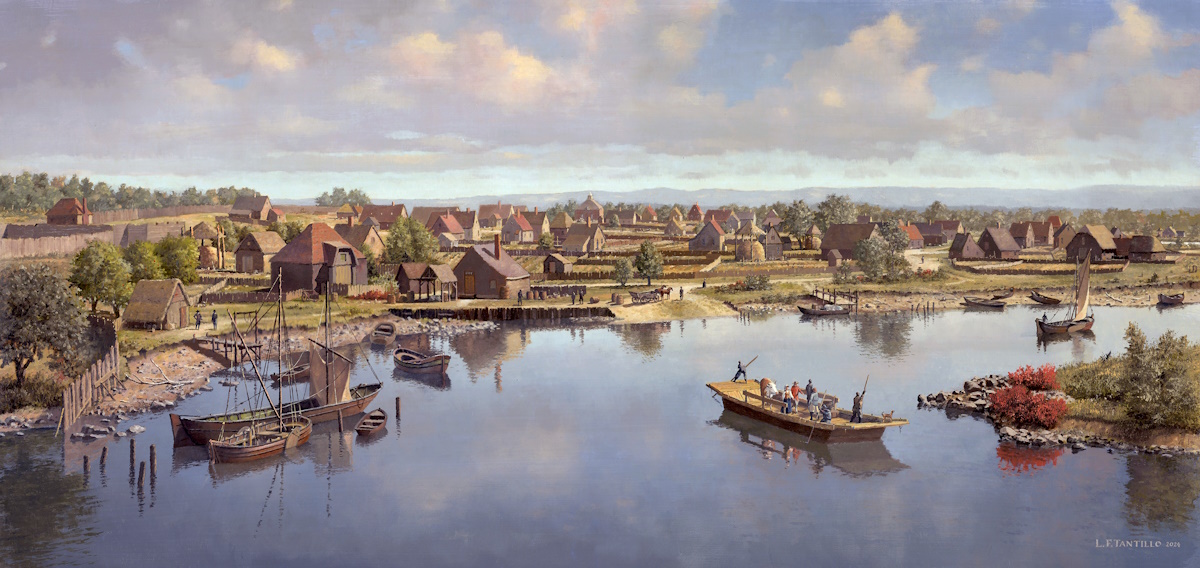Len Tantillo’s latest work
The Settlement of Schenectady, c. 1680
Many people interested in the history of New Amsterdam and New Netherland are familiar with fine artist Len Tantillo’s extensive body of work. His meticulously researched and beautifully rendered paintings give us a vision of how that world probably looked and bring its history to life in a way that words alone cannot. The New Amsterdam History Center is fortunate that some of his images appear on our website. For example, click the “Videos” tab on the homepage and learn more in our 2015 video “New Netherland through History and Art”. And now, NAHC is pleased to claim a small connection to Tantillo’s latest work, The Settlement of Schenectady, c. 1680, which was unveiled by the Schenectady County Historical Society (SCHS) at a festive gala held in his honor on April 9. The connection is that the piece was commissioned by NAHC Trustee Sandra Lazo and her husband, Donald H. Layton, who have donated it to the SCHS. Sandy is a proud eighth-great-granddaughter of Jacques Cornelissen Van Slyck, who was one of the original founders of Schenectady in 1661.


At the gala: artist Len Tantillo, NAHC Trustee Sandra Lazo, and event emcee Michael Diana of SCHS
Tantillo’s prior work includes Schenectady Town (2005). Already a part of SCHS’s collection, it is a cozy, peaceful image of the settlement slumbering on a dark winter night. Lovely as the view is, however, it evokes for some the tragedy that befell Schenectady on the night of February 8/9 in 1690, when a force of French soldiers and militiamen with Mohawk and Algonkian allies attacked the town without warning. More than half of the inhabitants were killed or captured, and most of the buildings were destroyed. If you are not familiar with this view, you can see it here. In commissioning The Settlement of Schenectady, Sandy’s hope was to provide a contrasting perception, of a thriving and successful village at the edge of the wilderness. Schenectady was — both before the massacre and after tenaciously rebuilding—an important hub of commerce and transportation along the Mohawk River, and later the Erie Canal, between interior New York, the Hudson River, and the harbor of New York. Tantillo’s new painting reflects this with its scene of the active riverfront, numerous homes and outbuildings, and glimpses of the town’s first church and the forested hills beyond.
Before the grand unveiling, Tantillo treated guests to an illustrated description of his process in creating the image. He explained that he dug deeply into different elements of the work, researching old maps, the local geography, architectural history—among others—to devise authentic depictions of the various features in the painting. He even showed a photograph of Phoebe, his model for the little brown dog standing on the end of the ferry’s landing ramp. And he gamely gave his talk seated in a wheelchair, a few short days following full knee replacement surgery.

The Settlement of Schenectady, c. 1680 (2024), L. F. Tantillo.
After the gala, Mary Zawacki, SCHS’s Executive Director, remarked about the new work, “Adding another Tantillo painting to our collection is a dream come true. The painting will be prominently displayed in our ‘Beyond the Pines’ exhibition about Schenectady’s earliest days, which is undergoing a redesign over the summer. We hope it will help inspire our community to continue to join us in preserving and promoting our shared history.” Understanding history is a mission that NAHC shares with SCHS, and we congratulate them on this wonderful acquisition! (Images courtesy of Toya Dubin, Schenectady County Historical Society, Len Tantillo)
TO LEARN MORE
About Len Tantillo: lftantillo.com
About Schenectady history: schenectadyhistorical.org
About New Amsterdam: newamsterdamhistorycenter.org




